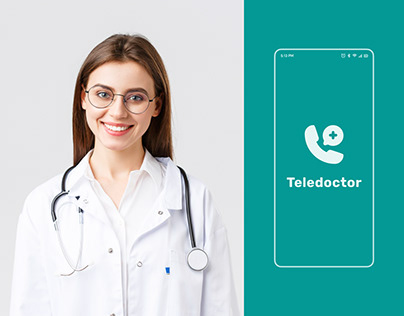Teledoctors: Revolutionizing Accessibility to Medical Care Solutions
Teledoctors: Revolutionizing Accessibility to Medical Care Solutions
Blog Article
Exploring the Advantages and Obstacles of Teledoctors in Modern Medical Care
As the medical care landscape evolves, teledoctors have become an essential component in connecting spaces in medical accessibility and efficiency. While they supply the pledge of getting to remote areas and decreasing operational expenses, the trip is not without its difficulties. Personal privacy worries, the electronic divide, and cybersecurity dangers posture significant obstacles that need to be addressed to harness their full capacity. How can the healthcare industry balance these benefits with the intrinsic challenges? This conundrum invites a deeper exploration right into the transformative function of teledoctors fit the future of medical care distribution.
Expanding Access to Care
Telemedicine has become a crucial innovation in modern-day medical care, significantly expanding accessibility to look after varied populations. By leveraging digital technology, teledoctors have changed the standard healthcare delivery version, making it feasible for patients in remote or underserved locations to obtain prompt medical appointment. This development is specifically helpful for people residing in rural neighborhoods, where the shortage of healthcare facilities and professionals frequently leads to delayed or poor treatment.
Teledoctors are important in connecting the gap developed by geographical obstacles. Via online examinations, individuals can access a wide variety of healthcare solutions without the requirement for comprehensive traveling. This is especially helpful for those with flexibility problems or chronic conditions needing constant medical attention. Furthermore, telemedicine improves continuity of treatment by enabling regular follow-ups and monitoring, thus improving patient end results.
The assimilation of teledoctors right into medical care systems likewise sustains the administration of public health and wellness situations by facilitating rapid reaction and triage. Throughout pandemics, for example, digital appointments reduce the burden on physical medical care centers, lessening exposure threats for both clients and healthcare service providers. As telemedicine proceeds to progress, it promises to improve the landscape of healthcare access, making it much more comprehensive and effective.
Cost-Effectiveness of Teledoctors
The cost-effectiveness of teledoctors is a significant aspect driving their widespread fostering in healthcare systems. By minimizing the need for physical facilities and in-person visits, teledoctors use a more budget-friendly alternative to standard medical care distribution. This design allows medical care companies to reduced operational expenses, such as those connected with maintaining physical offices and using comprehensive on-site personnel. teledoctors. Subsequently, these savings can be passed on to clients in the form of decreased appointment costs, making healthcare much more obtainable to a more comprehensive population.
In addition, teledoctors promote an extra reliable usage of medical care sources by decreasing unneeded emergency situation area brows through and medical facility admissions. Clients can access timely assessments for minor ailments or follow-up care, which helps to reduce the concern on overstretched health care facilities. This efficiency not only leads to set you back financial savings for health care suppliers however also reduces the economic pressure on individuals who might or else encounter pricey healthcare facility expenses.
Furthermore, teledoctors can aid in taking care of persistent diseases better by giving constant monitoring and prompt interventions. This proactive strategy can stop problems, thereby minimizing long-lasting therapy prices. Generally, teledoctors provide a viable solution to the rising prices of healthcare, while maintaining high quality care shipment.
Enhancing Patient Comfort
While cost-effectiveness plays an essential role in the increase of teledoctors, enhancing individual convenience stands as one more engaging advantage of this medical care model. With the combination of teledoctors, patients can bypass the generally time-consuming process of organizing and attending in-person visits. This design eliminates the requirement for traveling, reducing time spent in transportation and waiting rooms, consequently supplying significant time cost savings for people. Particularly for those with their website wheelchair concerns or residing in remote areas, teledoctors supply an essential link to clinical treatment that could otherwise be inaccessible.
Moreover, teledoctors use flexible organizing, allowing clients to prepare assessments sometimes that ideal suit their individual and professional dedications. This flexibility is very useful for individuals stabilizing requiring work timetables or family obligations, making certain that health care can be incorporated seamlessly into their lives. In addition, the ability to gain access to physician from the comfort of one's home can cause raised client engagement and adherence to treatment strategies, as the obstacles to seeking care are lowered.
The convenience offered by teledoctors not just boosts the patient experience however also adds to an extra responsive and effective healthcare shipment system, eventually sustaining far better health outcomes.
Attending To Personal Privacy Problems
In the middle of the expanding fostering of teledoctors, personal privacy worries become a substantial factor to consider. As health care progressively counts on digital platforms, ensuring the confidentiality of patient details comes to be vital. The digitization of medical records and using telecommunication modern technologies demand durable safety steps to safeguard sensitive information from unauthorized access and breaches.
Medical care providers have to comply with rigid policies, such as the Medical Insurance Mobility and Accountability Act (HIPAA) in the USA, which develops national criteria for protecting medical details. Compliance with such regulations is critical in maintaining person depend on and ensuring their information is handled sensibly. Encryption of information, protected interaction channels, and regular audits are a few of the measures that can be applied to enhance information protection.
Regardless of these steps, obstacles persist. Cybersecurity hazards are developing, and medical care organizations need to remain attentive to new vulnerabilities. In addition, educating both people and healthcare carriers about finest techniques in data personal privacy is essential. This includes recognizing the limitations of data and the relevance of secure login credentials. teledoctors.
As teledoctors come to be more essential to health care shipment, resolving personal privacy concerns is important to guarantee both the efficiency and reliability of these solutions.

Navigating the Digital Divide
Connecting the digital divide is an essential challenge in the widespread adoption of teledoctors. teledoctors. This divide encompasses variations in access to digital innovation, especially amongst country, low-income, and senior populaces. These groups commonly do not have the essential gadgets, trusted internet connection, or electronic literacy needed for effective engagement in telehealth services. As a result, the benefits of teledoctors-- such as boosted ease of access and ease-- continue to be inaccessible for numerous individuals that might most take advantage of them.
In addition, initiatives to fund technology for low-income families can play a pivotal function in ensuring fair access. Medical care companies and area organizations need to collaborate to use electronic literacy programs, equipping patients to navigate telehealth systems confidently.

Conclusion
The combination of teledoctors into modern-day healthcare uses significant advantages, including increased accessibility to care, cost-effectiveness, and improved patient ease. Nevertheless, obstacles such as privacy concerns, the electronic divide, and cybersecurity threats need to be addressed to make best use of these advantages. By executing durable data security actions, improving digital proficiency, and ensuring safe technical framework, the potential of teledoctors can be fully understood, promoting fair health care distribution and changing the healthcare experience for all individuals.

Report this page